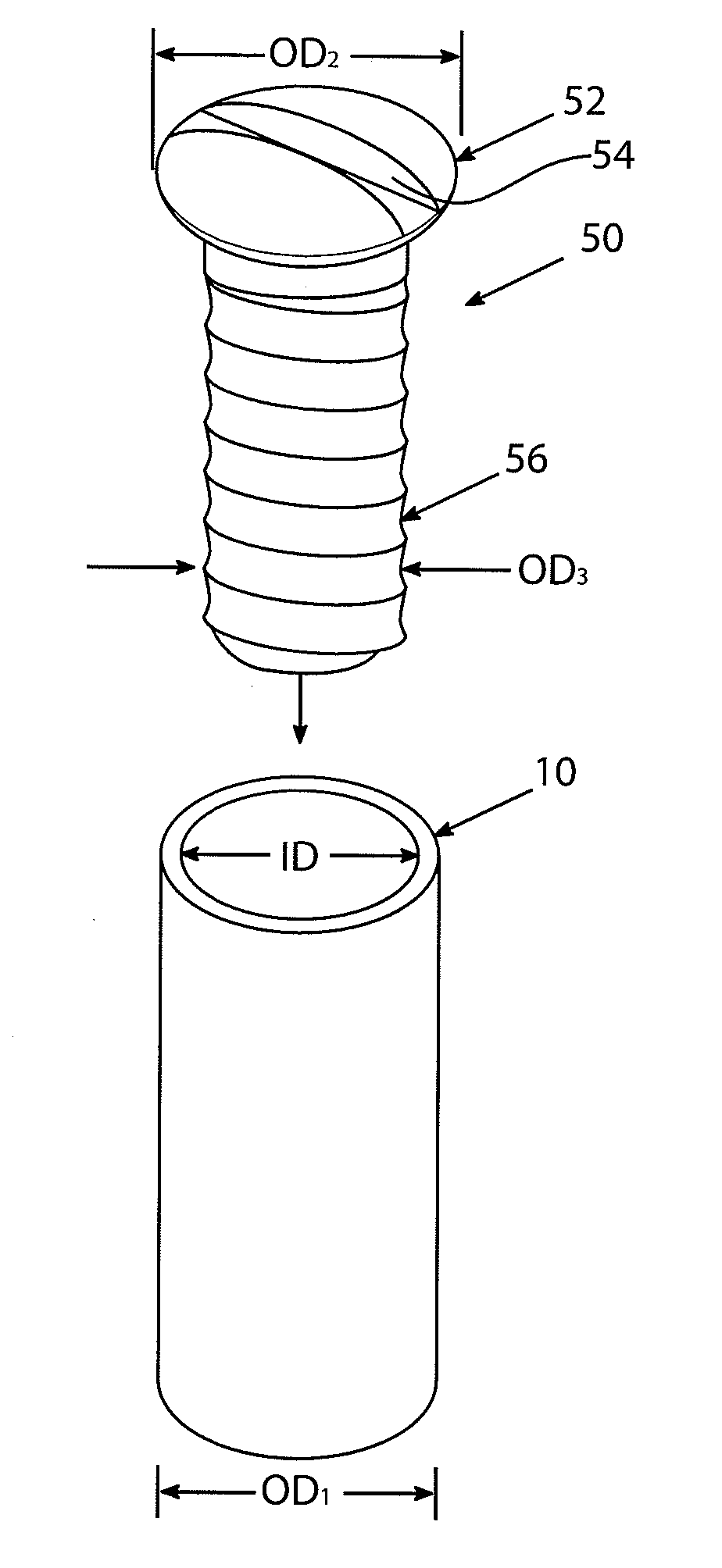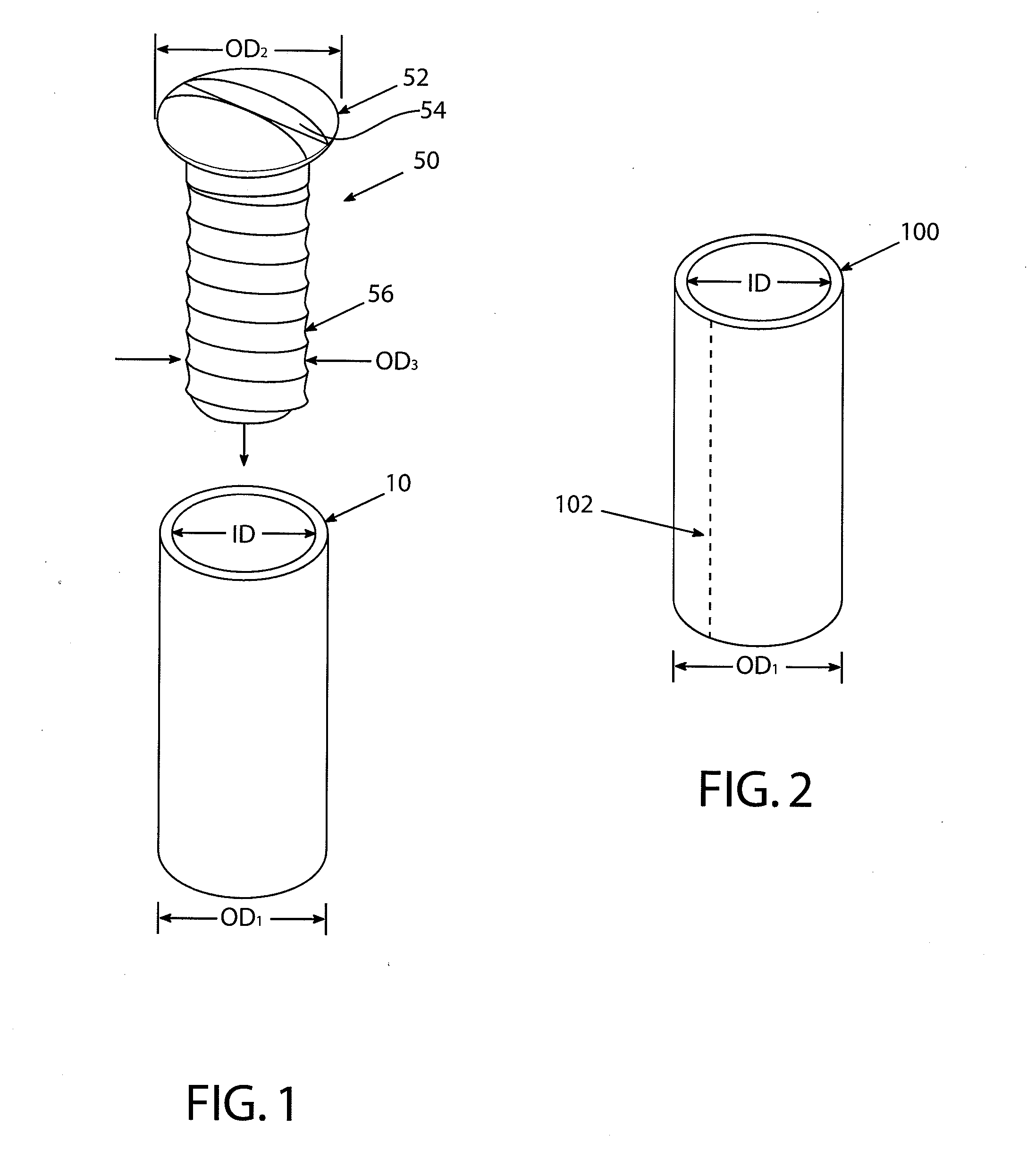Bone screw introducing sleeve
a bone screw and sleeve technology, applied in the field of medical devices, can solve the problems of reducing the blood supply of the fractured bone, affecting the healing process, so as to reduce the trauma of the patient, reduce the risk of fracture, and improve the healing process.
- Summary
- Abstract
- Description
- Claims
- Application Information
AI Technical Summary
Benefits of technology
Problems solved by technology
Method used
Image
Examples
Embodiment Construction
[0022]In the drawings, like numerals indicate like elements throughout. Certain terminology is used herein for convenience only and is not to be taken as a limitation on the present invention. The terms “distal” and “proximal” refer, respectively, to directions closer to and away from the patient. The terminology includes the words specifically mentioned, derivatives thereof and words of similar import. The terms and expressions used herein, and the embodiments illustrated below, are not intended to be exhaustive or to limit the invention to the precise form disclosed. These terms, expressions and embodiments are chosen and described to best explain the principle of the invention and its application and practical use and to enable others skilled in the art to best utilize the invention.
[0023]FIG. 1 depicts a deformable guide sleeve 10 of the present invention, for use in controlled insertion of a surgical screw 50 through an incision and into a hole drilled into a bone of a patient....
PUM
 Login to View More
Login to View More Abstract
Description
Claims
Application Information
 Login to View More
Login to View More - R&D
- Intellectual Property
- Life Sciences
- Materials
- Tech Scout
- Unparalleled Data Quality
- Higher Quality Content
- 60% Fewer Hallucinations
Browse by: Latest US Patents, China's latest patents, Technical Efficacy Thesaurus, Application Domain, Technology Topic, Popular Technical Reports.
© 2025 PatSnap. All rights reserved.Legal|Privacy policy|Modern Slavery Act Transparency Statement|Sitemap|About US| Contact US: help@patsnap.com



